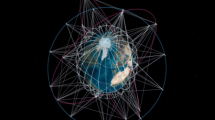 Eutelsat has validated the performance of a one-satellite geolocation solution that is now being deployed across its global monitoring network. The SIECAMS ILS ONE service developed by Siemens Convergence Creators assists in the localisation of interference signals without the need for an adjacent satellite, thereby increasing Eutelsat’s ability to intervene in the event of accidental or deliberate interference to customer signals.
Eutelsat has validated the performance of a one-satellite geolocation solution that is now being deployed across its global monitoring network. The SIECAMS ILS ONE service developed by Siemens Convergence Creators assists in the localisation of interference signals without the need for an adjacent satellite, thereby increasing Eutelsat’s ability to intervene in the event of accidental or deliberate interference to customer signals.
Preconditions of traditional geolocation methods
Existing satellite geolocation systems call for at least two geostationary satellites in close proximity to obtain sufficient crosstalk for reliable geolocation signal processing. Crosstalk on an adjacent satellite needs to be within the same frequency range and polarisation as the interference signal on the affected satellite. Even for multi-satellite operators some satellites are isolated in terms of uplink frequency ranges, polarisation and footprint. This is especially true for Ka-band satellites where crosstalk is either not applicable or too small to be measurable.
When a suitable adjacent satellite is within reach, operators still need to know exact position and velocities – or ephemeris data – for accurate geolocation. This can only be guaranteed if affected and adjacent satellites are operated by the same provider, or if providers share operational parameters.
With all of these preconditions, traditional geolocation tools, although frequently effective, cannot respond to all incidents, driving Eutelsat to seek improved capabilities.
One satellite is all you need
Eutelsat’s deployment of SIECAMS ILS ONE is driven by the system’s ability to analyse signal distortions that are primarily caused by satellite movement, atmospheric or weather influences and other environmental factors. By comparing signal distortions of the interference signal with known signals, using patented quantum correlation algorithms, SIECAMS® ILS ONE is able to identify the area of the interference source and thereby radically improve successful resolution of interference issues.
Mark Rawlins, Eutelsat’s Director of the Communications System Control Centre, stated: “Having validated proof of concept, we are confidently deploying the unique one-satellite interference detection system developed by Siemens Convergence Creators and are very pleased with the first results. We are enhancing our ability to localise interfering signals transmitted to our global fleet of satellites so that customers from South America to Asia Pacific can benefit from even more reliable and secure communications. As the first operator to take on board this solution we are adding more weight to our efforts to combat both accidental and deliberate interference.”











Add Comment